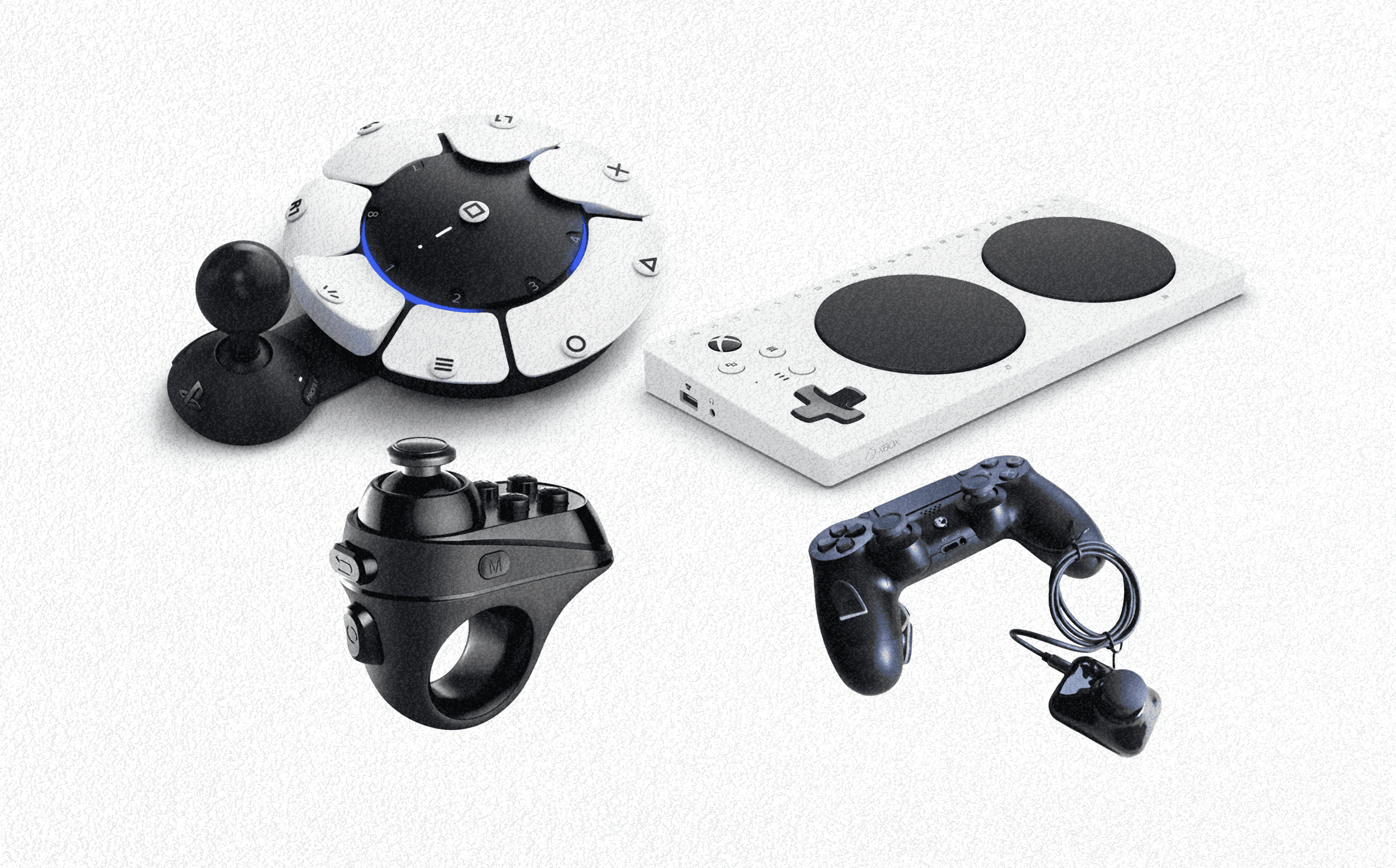Designed for the 10%
Left-handed gamers have been overlooked for decades. While right-handed controllers dominate the market, roughly 10% of players struggle with traditional layouts that feel unnatural and limit their performance. Despite the Xbox Adaptive Controller and PlayStation's accessibility features, these solutions focus on physical disabilities rather than handedness—and they often sacrifice aesthetics and portability for function.
The question became: Why don't premium, portable, left-handed controllers exist? Why should accessibility feel like a compromise rather than an upgrade?
As I began researching, I realized the problem wasn't just about handedness—it was about flexibility. Gamers have different hand sizes, grip styles, and preferences. A truly inclusive handheld wouldn't just swap left for right; it would adapt to each individual player without losing the cohesive, polished feel of a traditional console.
The solution was to separate controls from the body. By making only the controller modules swappable—while keeping the screen and core structure fixed—the design maintains the classic handheld silhouette while solving the flexibility problem.
The Play Mix uses magnetic quick-swap modules that let players configure their layout in seconds: D-pad on the right, buttons on the left, or any setup that feels natural. This isn't a "special edition" or an accessibility add-on—it's a premium handheld that works for everyone by default.
Design principles that guided development:
Familiar by nature: Button layouts and form factor echo classic handhelds (Game Boy, PSP) so muscle memory transfers instantly
Modular without complexity: Only the controls swap; everything else stays consistent
Premium feel: Soft-touch silicone, clicky tactile buttons, matte finish—no compromises on quality
Universal compatibility: Works for left-handed, right-handed, and mixed-preference players
Through two rounds of 3D-printed prototypes, I refined the ergonomics to feel natural in any configuration. The final design is slimmer, lighter, and more comfortable than early iterations—proving that modularity doesn't have to mean bulk.
The Play Mix isn't about designing for the "other 10%"—it's about creating a better handheld for everyone by refusing to accept that one-size-fits-all is good enough.
Key Features
Modular by Design
Swap controller modules in seconds. D-pad on the right, buttons on the left—or any configuration that feels right for you.
Universal Compatibility
Inspired by traditional controller layouts. Familiar button placement ensures any gamer can pick it up and play.
Built for Real Gamers
Not a compromise. Not a "special edition." A premium handheld that just happens to work for everyone.
Learning from what exists
I studied the Xbox Adaptive Controller and PlayStation Access Controller—both excellent for accessibility, but neither designed for left-handed players specifically. These systems prioritize function but lack the portability and aesthetic appeal of a traditional handheld.
Key insight:
The goal wasn't to reinvent controllers entirely. It was to separate the controls from the body, making the user's experience flexible while keeping everything else familiar and intuitive.
Finding the Form
Initial sketches explored everything from PSP-style sliders to completely modular systems. The challenge was balancing flexibility with simplicity—too many options would overwhelm users, while too few would limit the core value proposition.
The breakthrough: Keep the screen and core body fixed. Make only the controls modular. This preserves the classic handheld silhouette while solving the left-handed problem.
Separating controls from the console
The main idea is simple: detach the controller modules from the body, giving users full control over their layout. Inspired by the Game Boy's iconic form factor, the Play Mix maintains that nostalgic feel while adding modern modularity.
Design principles:
Familiar shapes that feel natural in hand
Quick-swap modules with magnetic connections
Minimal learning curve for new users
Clean, timeless aesthetic
Rapid iteration through 3D printing
Two rounds of 3D prints led to a slimmer, more ergonomic build. Early prototypes felt bulky and awkward. By refining the curves and reducing thickness, the final design feels natural—like a traditional handheld that just happens to be smarter.
Material exploration: Clicky buttons embedded in soft, tactile silicone create an authentic retro gaming experience with modern comfort.
A handheld that adapts to you
The Play Mix combines nostalgic design language with forward-thinking modularity. The matte finish, soft-touch controls, and vibrant accent buttons create a premium feel that rivals any modern console.
Available in multiple colorways to match your style—from classic grays to bold, playful palettes.
Designing for the Overlooked
This project reinforced an important truth: designing for edge cases makes better products for everyone. Left-handed gamers aren't a niche—they're 10% of the market that's been systematically ignored. By centering their needs, the Play Mix became more adaptable, thoughtful, and user-focused than a traditional handheld.
What I learned:
Modularity doesn't have to mean complexity—it can mean clarity of choice
Accessibility can be seamless, beautiful, and aspirational
The best inclusive designs don't feel like accommodations—they feel like upgrades
Iterative physical prototyping reveals ergonomic truths that sketches can't capture
Next Steps
If developed further, I'd explore:
Partnership with third-party manufacturers for specialized modules (fighting game layouts, accessibility grips)
Haptic feedback integration that adapts based on which modules are attached
Cross-platform compatibility with PC, mobile, and console streaming services
Expansion into full-size controllers using the same swappable module system
The Play Mix proved to me that good design isn't about choosing between accessibility and aesthetics—it's about refusing to accept that trade-off in the first place.












